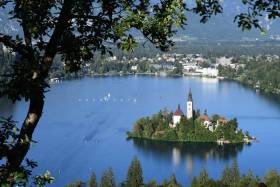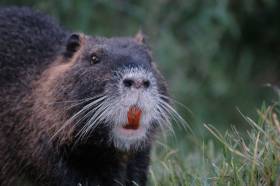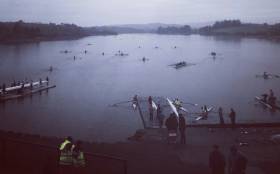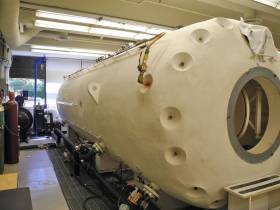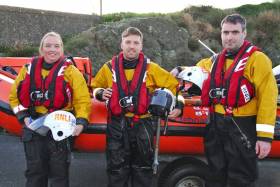Displaying items by tag: Cork
Irish Crews Win at World Masters Regatta
#Rowing: Irish composite crews had good wins on the first day of the World Masters Regatta in Bled in Slovenia. The Irish B eight (average age 36 or more), which is formed from six clubs won. Two fours in the E class (average age 55 or more) also won – the Galway/Neptune combination by just .26 of a second. The decision was initially given to their German opponents.
World Masters Regatta, Bled, Slovenia, Day One (Selected Results; Irish interest; all heats of 1,000 metres, winners only)
Men
Eight, B (avg 36 or more) – Heat Five: Galway, Commercial, Shandon, Clonmel, Neptune, Cork 3:05.51.
Four, E (avg 55 or more) – Heat One: Galway, Neptune 3:26.26.
Heat Four: Waterford, Neptune, Commercial, Belfast BC 3:28.1
Port Of Cork Secures Marino Point Site In Landmark Deal
#PortOfCork - The Port of Cork has secured the former Irish Fertiliser Industries Plant at Cobh in a public-private partnership deal that will see a significant expansion of its cargo handling facilities.
According to the Irish Examiner, the circa €6 million deal with Wexford-based Lanber Holdings gives the port a 40% stake in the site of the Marino Point plant, which closed in 2002 with the loss of 220 jobs.
Port of Cork chief executive Brendan Keating said the partnership will “explore every business opportunity for the site”.
He added: “We will focus initially on cargo handling and new trading opportunities, such as fertiliser and animal feed importation.”
The news follows the announcement of a new project to ship more than €300 million worth of natural gas from Texas to Cork, as reported yesterday on Afloat.ie.
It also comes as stakeholders in Cork Harbour propose moving the long-mooted International Shipping Services Centre to Leeside, and alongside plans for an improved cruise liner terminal on Cobh.
Commercial and UCD Double Test O'Donovans at Cork Regatta
#Rowing: Niall Beggan and Andrew Goff gave Gary and Paul O’Donovan a good battle in the Division One double sculls at Cork Regatta today. The Ireland under-23 lightweights, drawn from UCD and Commercial, placed second behind the Ireland senior lightweight double, ahead of Shane O’Driscoll and Mark O’Donovan.
NUIG won the men’s fours and the Skibbereen/UCC composite the women’s four by convincing margins. Cork won the women’s double, while Lee’s juniors took second.
Cork Regatta, National Rowing Centre, Cork, Day Two (Selected Results)
Men
Four – Div One – A Final: 1 NUIG (sen) 6:16.41. Four, coxed – Div Two – A Final: 1 Queen’s B (club two) 6:53.69, 2 St Michael’s (jun 18B) 6:56.53; 6 Presentation, Cork (jun 16) 7:33.61.
Sculling, Double – A Final: 1 Skibbereen (G O’Donovan, P O’Donovan; sen) 6:25.51, 2 Commercial, UCD (N Beggan, A Goff; sen) 6:27.62, 3 Skibbereen (M O’Donovan, S O’Driscoll; sen) 6:37.997; 5 Three Castles A (jun 18A) 6:49.76. B Final: St Michael’s (inter) 6:51.20.
Single – Div Two – A Final: 1 Three Castles (A Keogh; jun 16) 7:29.64, 2 Cappoquin (S Landers; club two) 7:35.39; 6 Killorglin (J McCarthy; Jun 18B) 7:52.86.
Women
Four – Div One – A Final: 1 Skibbereen, UCC (N Casey, E Hegarty, A Keogh, D Walsh; sen) 6:59.0. B Final: Col Iognaid (jun 18A) 7:39.68.
Sculling, Double – Div One – A Final: 1 Cork (inter) 7:19.591, 2 Lee (jun 18A) 7:23.45. B Final: 2 Carlow (club one) 7:40.31.
NUIG Women's Eight Impress At Metropolitan Regatta
#Rowing: Irish crews had a very successful second day at the Metropolitan Regatta at Dorney Lake. Monika Dukarska of Killorglin and the Skibbereen double of Denise Walsh and Aoife Casey won in the top single and double sculls races, but other crews also impressed. NUIG’s women’s eight finished third in the A Final in Tier One – the crew, which has a number of novice rowers, had also taken third in the morning time trial. Trinity, UCC, Shandon, Galway, Cork and UCD were amongst the crews which also came away with encouraging results over the weekend.
Metropolitan Regatta, Dorney Lake, Day Two (Selected Results; Irish interest)
Men
Eights – Tier One, Final B: 2 NUIG A, 3 UCD (A). Final C: 1 Trinity 6:07.65. Final D: 2 UCD. Final F: 1 NUIG (B) 6:25.61. Final I: 2 Trinity (D), 3 UCD (C).
Four – Tier Three Final: 1 UCC 6:36.53.
Four, coxed – Championship Final: 3 NUIG (B).
Pair – Tier Two Final: 2 UCC
Sculling, Double
Tier Two Final: 2 Shandon
Women
Eight – Tier One – Final A: 3 NUIG (A). Final B: 2 Commercial. Final C: 3 Galway. Final D: 2 NUIG.
Four, coxed – Tier Three: 3 Galway Rowing Club.
Pair - Tier One Final: 2 Cork (G Collins, L Dilleen)
Sculling, Double – Tier One Final: 1 Skibbereen 7:17.56.
Single – Tier One: 1 Killorglin (M Dukarska); 3 UCD (A Crowley).
Public Urged To Report Coypu Sightings In Cork
#MarineWildlife - Cork residents near the River Lee are urged to be report any sightings of coypu after one of the large rodents was seen in Cork city last week.
The invasive species was released within the last two years in the Curraheen River, a tributary of the Lee, with the National Parks and Wildlife Service (NPWS) trapping 10 of the large river rats since then, according to the Irish Examiner.
But the NPWS now seeks the public’s help in identifying how far beyond the Curraheen they might have spread, with possible sightings on the Cork-Bandon road, at Monkstown on Cork Harbour and in streams north of the city.
The situation is a far cry from two years ago, when fears of a coypu invasion of Ireland’s inland waterways were dismissed upon the news of a single three-foot rodent found in a Tipperary stream, as previously reported on Afloat.ie.
Also known as nutria in the United States, the rodents are regarded as a destructive invasive species and pest, posing a threat to the stability of river banks and even coastal defences.
The Irish Examiner has more on the story HERE.
RNLI In Running For Douglas Shopping Centre’s Charity Of The Year
#RNLI - The RNLI’s Cork city fundraising branch is one of 10 charities shortlisted for Douglas Court Shopping Centre’s charity partner of the year.
Votes on Facebook will be tallied after the closing date this Friday 3 March for a prize to the winning charity that includes a €1,000 shopping voucher and collection days at the shopping centre throughout the year.
Votes can also be cast at the centre’s information desk for those not on social media.
UCC Eight Impress at Muckross Rowing
#Rowing: UCC’s senior eight set an excellent time of 10 minutes four seconds for the course length of approximately three kilometres at the Muckross Head of the River at the National Rowing Centre. The young crew, stroked by Ciarán Higgins, was far and away the fastest crew of the day. The Skibbereen/UCC women’s composite eight set a time of 11 minutes 56 seconds, three seconds faster than that of Cork Boat Club. Conditions were excellent, especially in the morning. SEE ATTACHED RESULTS.
Muckross Head of the River, Selected Results
Men
Eight – Senior: UCC 10 minutes 4 seconds; Commercial 10:42; Cork/UCC 11:12. Club One: Commercial 11:43. Club One/Masters: Castleconnell, Shandon, Univ of Limerick 11:43. Junior 18: Commercial 11:01.
Four – Senior: Cork 11:23.
Pair – Senior: Commercial (Acheson) 11:52. Inter: Commercial (Beggan) 11:46.
Sculling – Quadruple: Shandon/UCC 11:21. Junior 18: Castleconnell 11:35. Jun 16, coxed: Shandon 11:23.
Single: UCC (R Byrne) 12:08.
Women
Eight – Skibbereen/UCC 11:56. Junior 18: Lee 13:28
Sculling - Quadruple – St Michael’s 13:13
Double – St Michael’s 12:46.
Single - Senior: Skibbereen (O Hayes) 13:48. Junior 18: Lee (M Cremen) 13:51.
Cork Diving Community Fundraising For Hyperbaric Chamber
#Diving - The SCUBA diving community in Cork is raising funds for a hyperbaric chamber to treat divers with decompression sickness, as the Irish Examiner reports.
Otherwise known as ‘the bends’, the potentially fatal condition is contracted when nitrogen bubbles form in the bloodstream of divers who surface from deep dives too quickly.
However, there is only one hyperbaric chamber required for the necessary oxygen therapy that caters for diving emergencies in the Republic, located in Galway.
That’s prompted the creation of the Munster Hyperbaric Chamber Project, to provide emergency facilities for affected divers in Ireland’s south-west in time for the 2017 diving season. The Irish Examiner has more HERE.
In other diving news, two English SCUBA clubs have shared a top award for their expedition to Ratlin Island off the Causeway Coast, according to the Bury Times.
Divers from Bury and Wigan in the greater Manchester area were awarded the Expedition Trophy at the British Sub-Aqua Club Diving Conference recently for their reef and shipwreck dives out of Ballycastle — including one visit to a cruiser torpedoed during the First World War.
Byrne Best Again in Cork Sculling Time Trial
#Rowing: Ronan Byrne came home fastest of over 200 scullers to win the Cork Sculling Ladder time trial at the Marina in Cork. The UCC man, the outright sculling ladder winner for the two seasons and time trial winner 12 months ago, won in a time of seven minutes 12 seconds from Dan Begley of Shandon, and joint-third placed Stephen O’Sullivan (Shandon) and Barry O’Flynn (Cork BC).
Margaret Cremen of Lee Rowing Club – also the ladder winner last season – won the women’s section. She recorded a time of eight minutes and .8 of a second. Aoife Lynch (Lee) was second and Elma Bouanane of Fermoy third.
The ladder continues until the April 2nd, 2017.
Cork Sculling Ladder 2016 Time Trial: Results
Men
1 Ronan Byrne, UCC. 7: 12.00
2 Dan Begley, Shandon BC. 7: 14.7
3= Stephen O’Sullivan, Shandon BC. 7: 23.6
3= Barry O’Flynn, Cork BC. 7: 23.6
5 Colm Hennessy, Shandon BC. 7: 29.7
6 Jack Casey, Shandon BC. 7: 31.8
7 Andy Harrington, Shandon BC. 7: 33.6
Women
1 Margaret Cremen, Lee RC. 8: 00.8
2 Aoife Lynch, Lee RC. 8: 31.3
3 Selma Bouanane, Fermoy RC. 8: 32.5
4 Aoife Higgins, Cork BC. 8: 43.4
5 Clara O’Sullivan, Cork BC. 8: 44.1
Wicklow Lifeboat Volunteers Assist Lone Sailor & Rescue Man From Water In Weekend Callouts
#RNLI - Lifeboat volunteers with Wicklow RNLI responded to two callouts over the weekend, assisting a lone yachtsman and a person in the water.
The first came on Saturday 17 September as the all-weather lifeboat Annie Blaker launched at 2.55pm to assist a small yacht south of Wicklow harbour.
The vessel, with one person on board, had developed mechanical problems near the horseshoe buoy. With light winds, he was unable make his way back to Wicklow Harbour.
English yacht Amica, which was passing, made contact and attempted to tow the vessel back to Wicklow. However, with the tide against him and strong currents, they were unable to make much headway around Wicklow Head.
The lifeboat, under the command of coxswain Nick Keogh, located the vessel off Wicklow Head and a towline was quickly established. The yacht and the lone sailor were brought safely alongside the East Pier shortly after 3.45pm.
The second callout came yesterday morning (Sunday 18 September) at 6:45am after the Irish Coast Guard received a report of a person in the water at Wicklow Harbour. The inshore lifeboat crew arrived on scene at the South Quay a short time later.
Lifeboat volunteer Ian Thompson entered the water to rescue the casualty, who was disorientated and injured.
Thompson was able to assess and reassure the casualty before bringing him to a nearby ladder and, with the assistance of gardaí, the person was lifted to safety and transferred to a waiting ambulance for medical treatment.
This multi-agency rescue operation involved the the coastguard, Wicklow RNLI, Wicklow Garda and the Wicklow Ambulance Service.
Elsewhere, the body of a man was recovered from the River Lee in Cork city last night hours after a car was reportedly seen entering the water at Kennedy Quay. BreakingNews.ie has more on the story HERE.


























